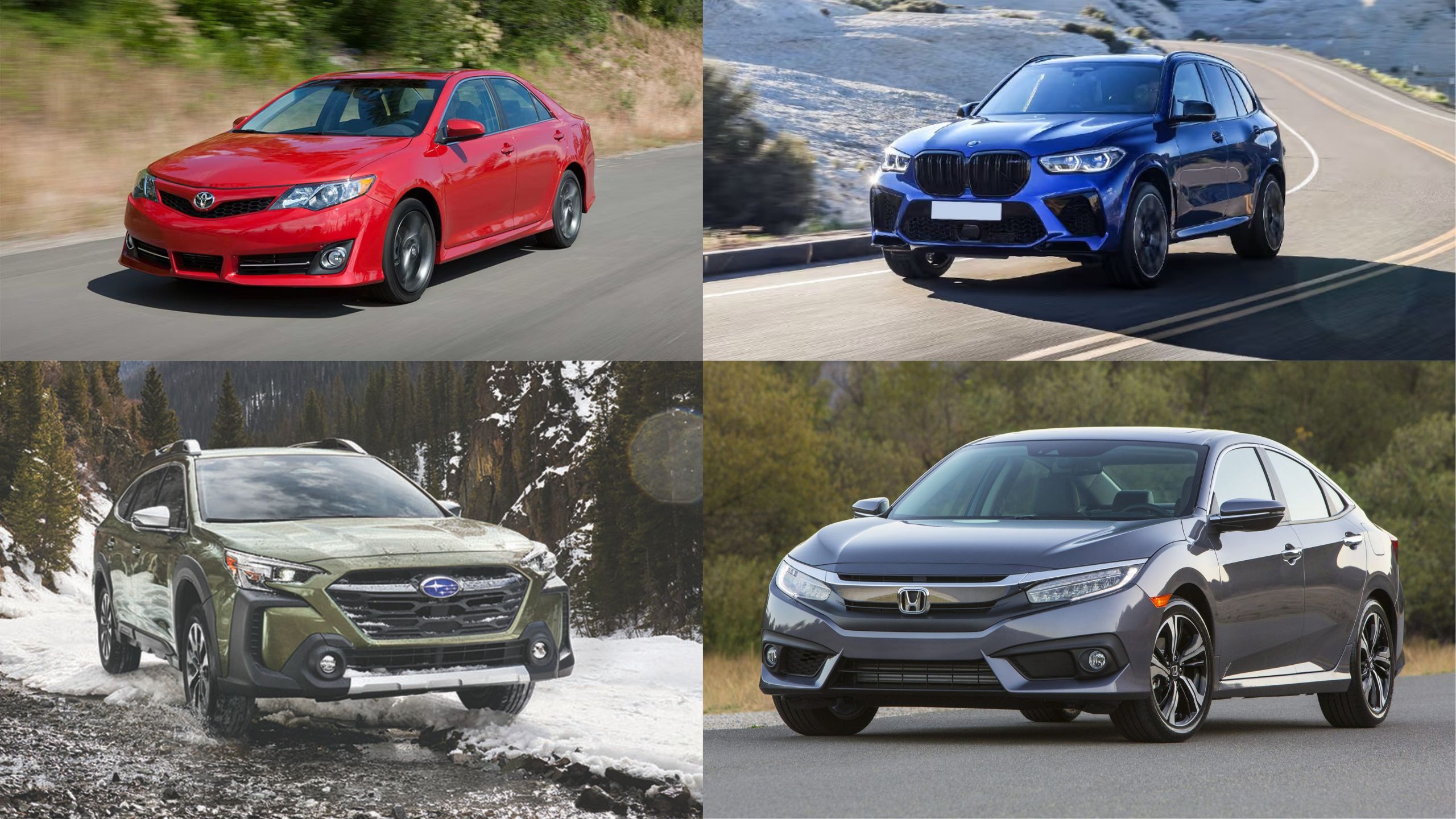Cars are an essential part of modern life, often subjected to rigorous daily demands like lengthy commutes, frequent stop-and-go traffic, and varying road conditions.
While some vehicles are engineered to withstand this punishment with grace, others quickly reveal their limitations under such pressure. Understanding which cars excel under heavy use and which may falter can save drivers significant time, money, and frustration in the long run.
This guide examines five vehicles designed to endure the hardships of daily driving and five that might struggle with such demands.
From build quality and mechanical reliability to maintenance costs and longevity, we’ll explore the factors that separate these automotive workhorses from their less durable counterparts.
5 Cars That Can Handle Heavy Daily Use
Whether logging thousands of miles each month for work, going challenging urban environments daily, or simply seeking a vehicle that won’t wilt under pressure, this assessment provides valuable insights to inform your automotive decisions.
1. Toyota Camry
The Toyota Camry has earned its reputation as the quintessential reliable daily driver through decades of consistent performance and mechanical dependability.
This midsize sedan’s staying power is no accident. Toyota’s engineering philosophy prioritizes durability above all else, with many owners reporting their Camrys surpassing 300,000 miles with only routine maintenance.
At the heart of the Camry’s resilience is Toyota’s conservative approach to engineering. Rather than pushing boundaries with cutting-edge but unproven technology, Toyota refines existing systems incrementally.
The result is a powertrain, particularly the 2.5L four-cylinder engine that’s both understressed and thoroughly tested. This engine operates well below its theoretical maximum output, reducing wear and extending lifespan significantly.
The Camry’s electrical systems also demonstrate remarkable durability, with simplified components that minimize potential failure points.
Toyota’s suppliers adhere to stringent quality standards, ensuring that even minor components like window regulators and dashboard switches function properly years beyond the warranty period.
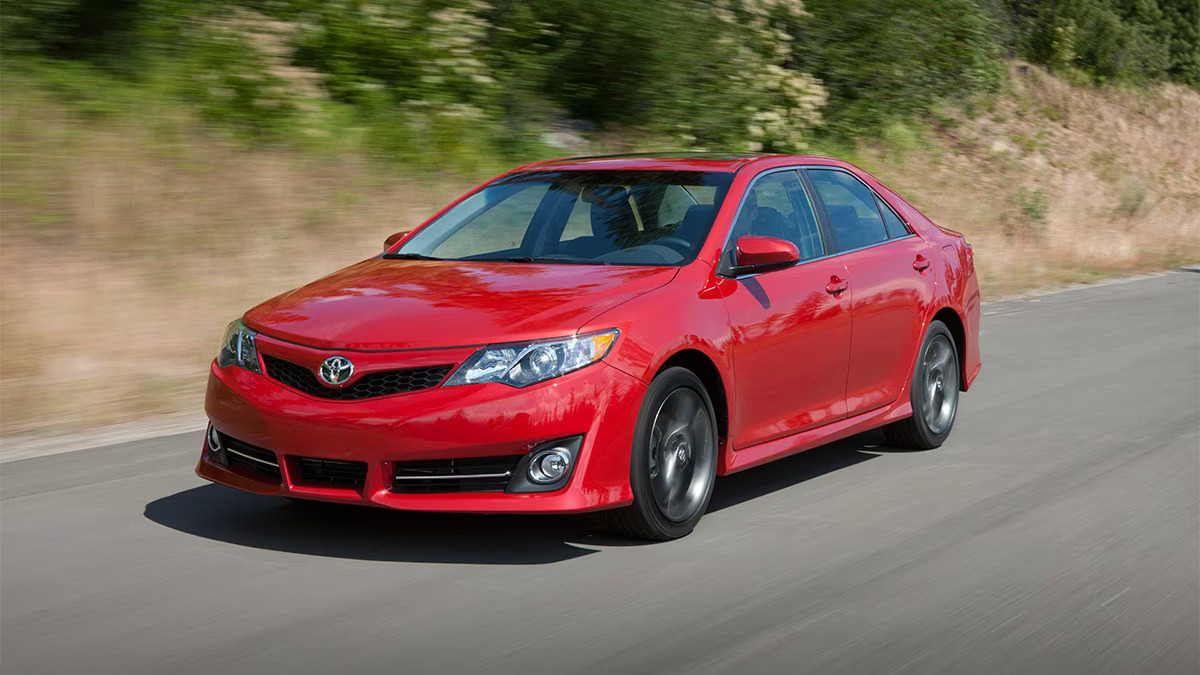
Maintenance accessibility further enhances the Camry’s suitability for heavy use. Oil changes, brake services, and other routine maintenance tasks require minimal specialized tools, making them less expensive at service centers and more feasible for DIY-inclined owners.
Parts availability is exceptional, with components readily accessible through both dealerships and aftermarket suppliers at reasonable prices. The Camry’s practical design extends to its interior, which features hard-wearing materials that resist the wear patterns typical of high-mileage vehicles.
Seat bolsters maintain their shape even after thousands of entries and exits, while touch points like steering wheels and door handles use materials specifically chosen for longevity.
Perhaps most telling is the Camry’s prevalence in commercial fleets and taxi services environments where vehicles face the ultimate test of durability.
When professional drivers who pay for their own maintenance choose a vehicle consistently, it speaks volumes about that model’s ability to withstand punishing daily use.
2. Honda Civic
The Honda Civic stands as a testament to engineering excellence in the compact car segment, consistently demonstrating exceptional resilience under demanding daily use.
This vehicle’s endurance stems from Honda’s commitment to overbuilding critical components rather than engineering them to minimum specifications, a philosophy evident throughout the Civic’s design.
Honda’s legendary engines form the cornerstone of the Civic’s durability. The company’s expertise in building high-performance, high-revving motorcycle engines translates to automotive power plants with remarkable tolerance for stress.
The Civic’s engines particularly the naturally aspirated variants feature precision-machined components with tight tolerances that contribute to their longevity.
The timing chains (rather than belts in many models) rarely require replacement, while the valve adjustment intervals extend to 100,000 miles or beyond in normal use.
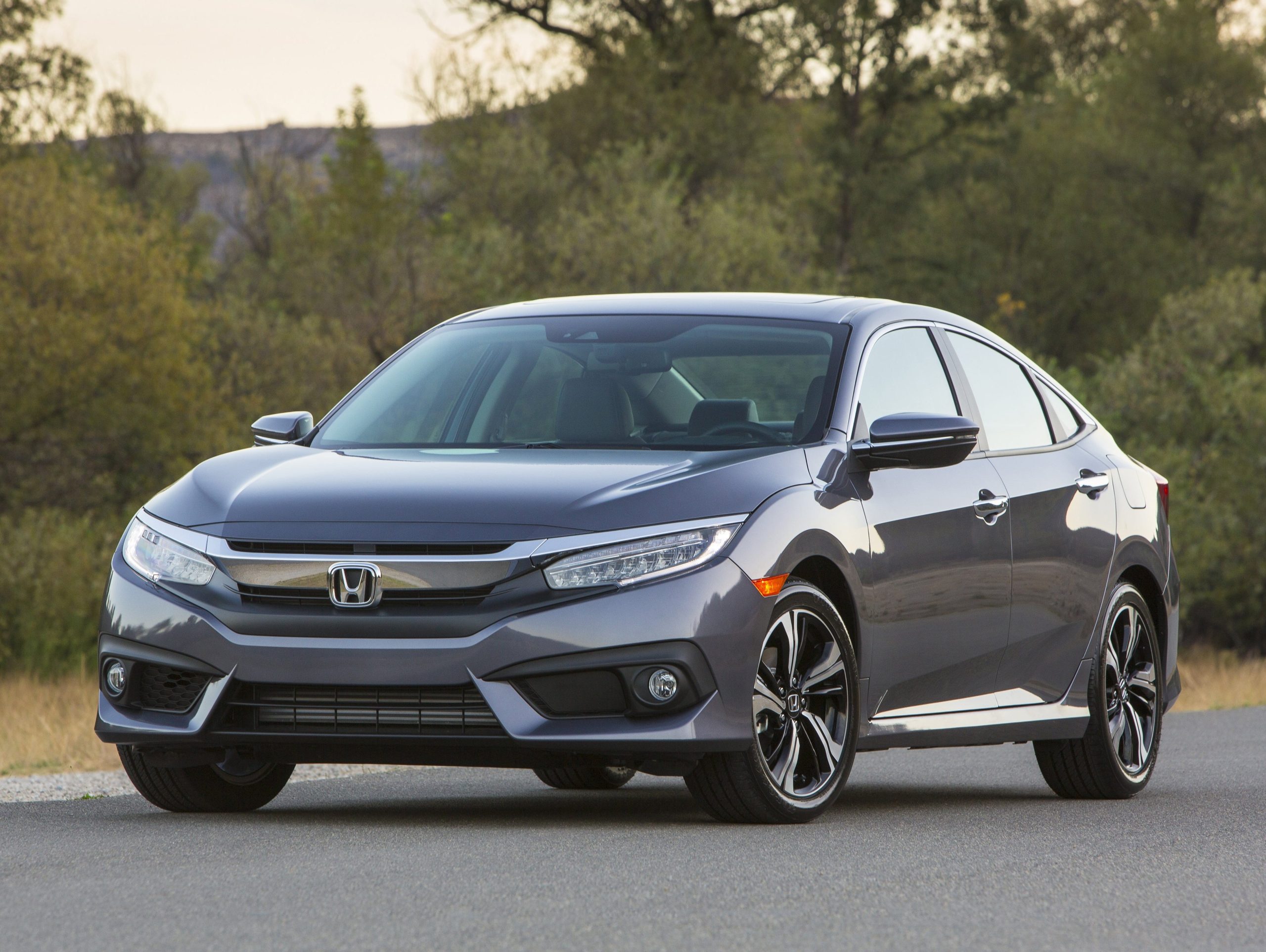
The Civic’s transmission options also demonstrate exceptional durability. Manual transmissions feature synchronized gearsets with robust construction that withstand aggressive shifting patterns, while automatic transmissions benefit from Honda’s conservative approach to programming shift points, preventing unnecessary wear.
The cooling systems for both engine and transmission are generously sized, reducing thermal stress even in extreme stop-and-go traffic conditions.
Structurally, the Civic’s chassis maintains its integrity despite years of exposure to potholes, speed bumps, and rough roads. The suspension components, particularly control arm bushings and ball joints, outlast many competitors’ equivalents.
Honda’s emphasis on using high-quality materials for these critical components pays dividends in long-term reliability and consistent handling characteristics throughout the vehicle’s life.
The Civic’s electrical system exhibits similarly thoughtful engineering, with connectors and harnesses designed to resist corrosion and vibration-induced failures. Dashboard electronics typically maintain functionality well beyond 150,000 miles, a point at which many competitors begin experiencing electronic gremlins.
Perhaps most impressive is the Civic’s ability to maintain fuel efficiency and performance characteristics even at high mileage.
While many vehicles experience gradual degradation in these metrics as they age, properly maintained Civics often deliver nearly the same fuel economy and acceleration at 200,000 miles that they did when new, a testament to Honda’s engineering precision and the vehicle’s resistance to performance degradation under heavy use.
3. Subaru Outback
The Subaru Outback has carved out a unique niche as a daily driver that thrives under challenging conditions, making it exceptionally well-suited for heavy use scenarios.
This crossover’s ability to withstand punishment stems from Subaru’s rally racing heritage and practical engineering approach that prioritizes real-world functionality over showroom appeal.
Central to the Outback’s durability is its horizontally opposed “boxer” engine design. Unlike conventional inline or V-configuration engines, the boxer’s opposing cylinder layout naturally cancels out vibration, reducing stress on engine mounts and related components.
This inherent balance translates to fewer vibration-induced failures in peripheral systems like the alternator, power steering pump, and air conditioning components.
The boxer configuration also results in a lower center of gravity, reducing stress on suspension components during cornering and over uneven terrain.
Subaru’s symmetrical all-wheel-drive system represents another pillar of the Outback’s durability.
Unlike adaptive systems that engage secondary wheels only when slippage is detected, Subaru’s full-time system distributes power evenly and predictably, preventing the drivetrain shock loads that can damage part-time systems.
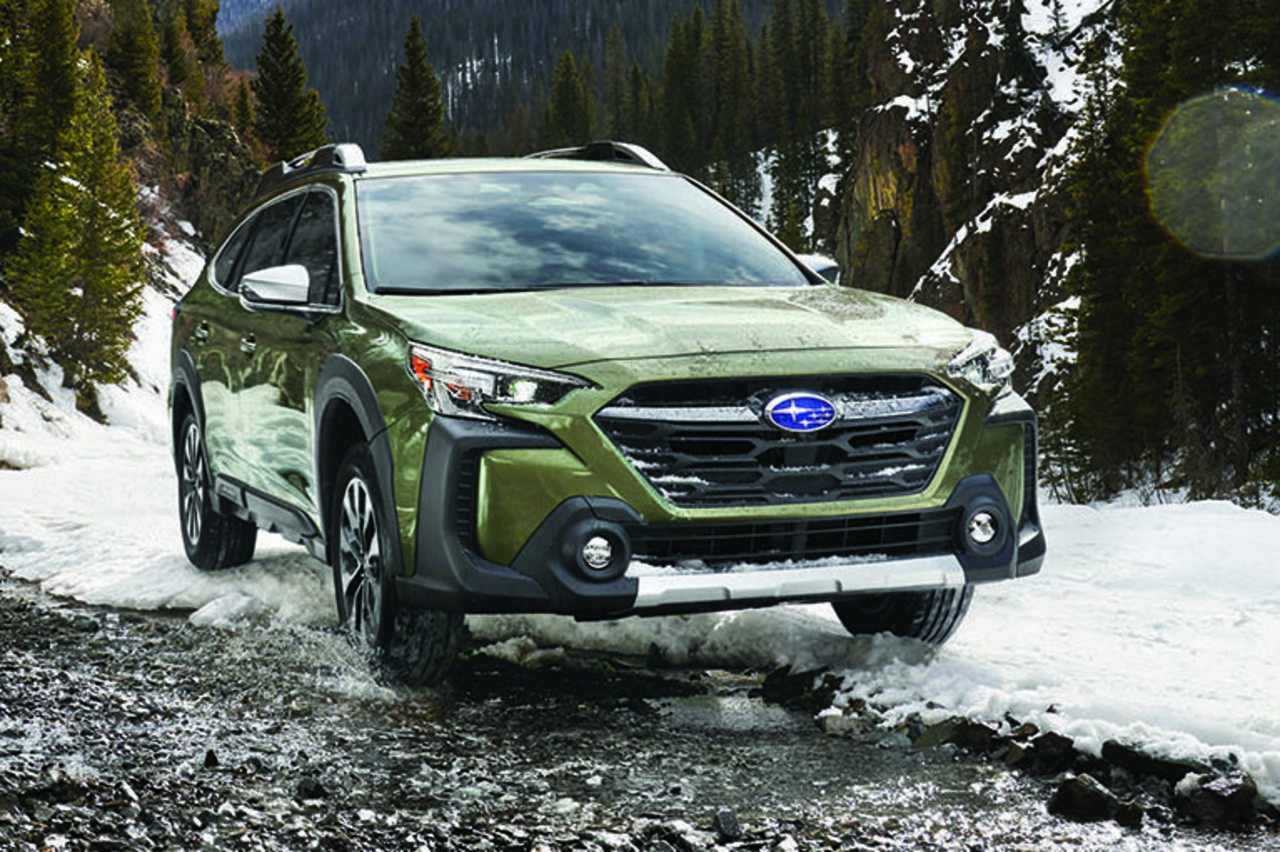
This balanced power delivery reduces stress on CV joints, differential components, and transmission internals, particularly in adverse conditions like snow, rain, and unpaved roads.
The Outback’s substantial ground clearance, 8.7 inches in recent models, prevents undercarriage damage from road debris, unexpected obstacles, and rough terrain.
This raised stance is complemented by the strategic placement of protective shields for vulnerable components and the thoughtful routing of brake lines and fuel lines away from potential impact zones.
Subaru’s approach to body construction further enhances durability, with extensive use of high-strength steel and strategic reinforcements in areas prone to flex.
The result is impressive torsional rigidity that prevents the body flex that eventually leads to squeaks, rattles, and premature wear in less robust vehicles. The Outback’s doors, hood, and liftgate maintain proper alignment significantly longer than many competitors, preventing wind noise and water leaks even after years of use.
Interior materials in the Outback reflect Subaru’s practical approach, with upholstery and touch surfaces selected for stain resistance and durability rather than luxury appearance.
This pragmatic design philosophy extends to cargo areas, which feature washable surfaces and tie-down points reinforced to handle actual working loads rather than token weights.
The Outback’s exceptional suitability for heavy daily use is perhaps best illustrated by its overwhelming popularity in regions with harsh weather and challenging terrain, where drivers value function over fashion and require vehicles that won’t falter under demanding conditions.
4. Ford F-150
The Ford F-150 has maintained its position as America’s best-selling vehicle for over four decades by delivering exceptional durability under heavy daily use.
This full-size pickup’s ruggedness isn’t merely marketing, it’s engineered into every aspect of the vehicle’s design, making it particularly suited to punishing work regimens and demanding daily driving scenarios.
The F-150’s durability begins with its revolutionary aluminum body construction, introduced in 2015. Beyond the obvious weight savings, this aircraft-grade aluminum alloy provides superior corrosion resistance compared to traditional steel bodies, virtually eliminating the rust issues that historically limited truck longevity.
The aluminum panels are also more dent-resistant and less prone to fatigue cracking under repeated stress, maintaining structural integrity through years of hard use. Beneath this innovative exterior lies a fully boxed high-strength steel frame designed with substantial cross-members and precisely engineered load paths.
This robust foundation enables the F-150 to withstand constant heavy loading, frequent off-road excursions, and the torsional stresses of uneven terrain without developing the frame fatigue that eventually compromises lesser trucks.
Ford’s extensive durability testing includes simulation of 10 years of abuse compressed into months of continuous torture testing.
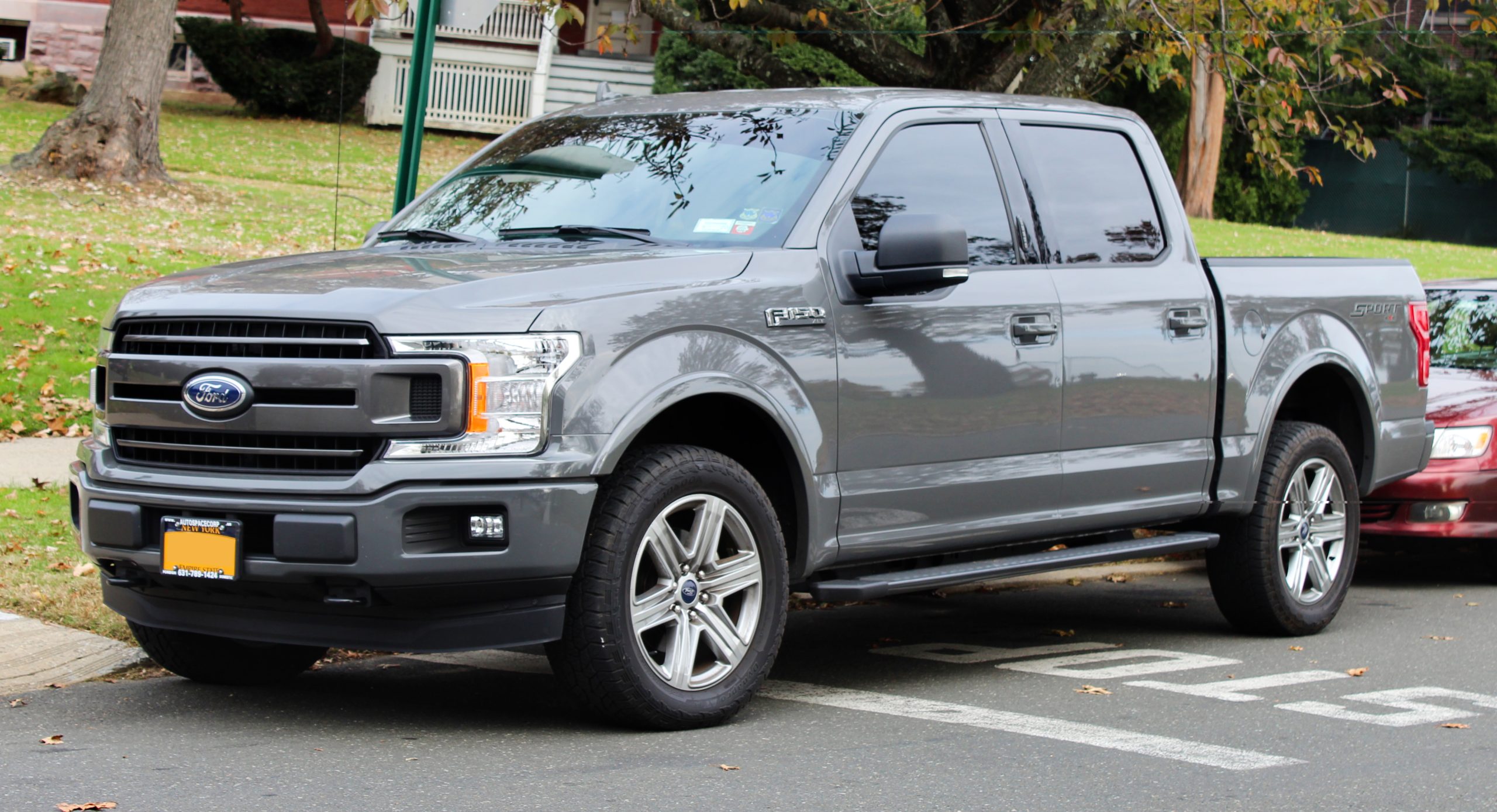
The F-150’s powertrain options demonstrate Ford’s commitment to durability across different use cases. The naturally aspirated 5.0L V8 provides traditional reliability through simplified design and decades of refinement.
Meanwhile, the EcoBoost turbocharged engines, while more complex, feature overbuilt internals to handle the increased pressures and thermal loads associated with forced induction.
Robust cooling systems prevent overheating during towing or hauling, while sophisticated engine management software protects components during extreme conditions.
Transmission durability represents another F-150 strength, with the 10-speed automatic utilizing wide gear spacing to keep the engine in its efficiency sweet spot while reducing internal stresses.
The transmission’s multiple clutch packs distribute wear across more components than simpler designs, extending service life substantially.
Similarly, the transfer case in 4×4 models features reinforced components and improved sealing to prevent the fluid contamination that often plagues trucks in demanding conditions.
The F-150’s suspension system balances ride quality with durability through carefully selected materials and design.
Control arms feature robust bushings that resist deterioration from road salt and environmental exposure, while shock absorbers incorporate advanced valving that maintains performance despite temperature variations and extended use.
Leaf springs in rear models feature progressive designs that respond appropriately to varying loads while minimizing fatigue. Perhaps most telling is the F-150’s dominance in commercial fleets, where vehicle downtime translates directly to lost revenue.
When businesses that meticulously track vehicle costs consistently choose the F-150 despite its higher initial price compared to some competitors, it speaks volumes about the truck’s ability to deliver long-term value through exceptional durability under heavy daily use.
Also Read: 5 Vehicles That Last on Rural Roads and 5 That Belong in Cities
5. Lexus ES
The Lexus ES represents the perfect synthesis of Toyota’s legendary reliability and Lexus’s luxury refinement, creating a vehicle exceptionally well-suited to heavy daily use without the compromises typically associated with high-mileage operation. This midsize luxury sedan demonstrates that durability and comfort need not be mutually exclusive.
At the heart of the ES’s remarkable longevity is its powertrain particularly the 3.5L V6 engine that has been refined over decades to achieve a near-perfect balance of performance and durability.
This naturally aspirated engine operates with minimal internal stress despite producing substantial power, featuring overbuilt internal components including forged connecting rods and a sturdy crankshaft that maintains precise tolerances well beyond 200,000 miles.
The timing chain system eliminates the need for belt replacement intervals, while the variable valve timing system incorporates fail-safe mechanisms that prevent catastrophic engine damage even if maintenance is occasionally delayed.
The ES’s transmission demonstrates similar engineering excellence. The traditional automatic transmission (avoiding the more complex CVT designs used in some competitors) features fluid cooling systems sized for continuous operation in extreme conditions.
The planetary gear sets utilize materials specifically chosen for wear resistance, while the valve body incorporates precise machining that maintains shift quality despite years of use.
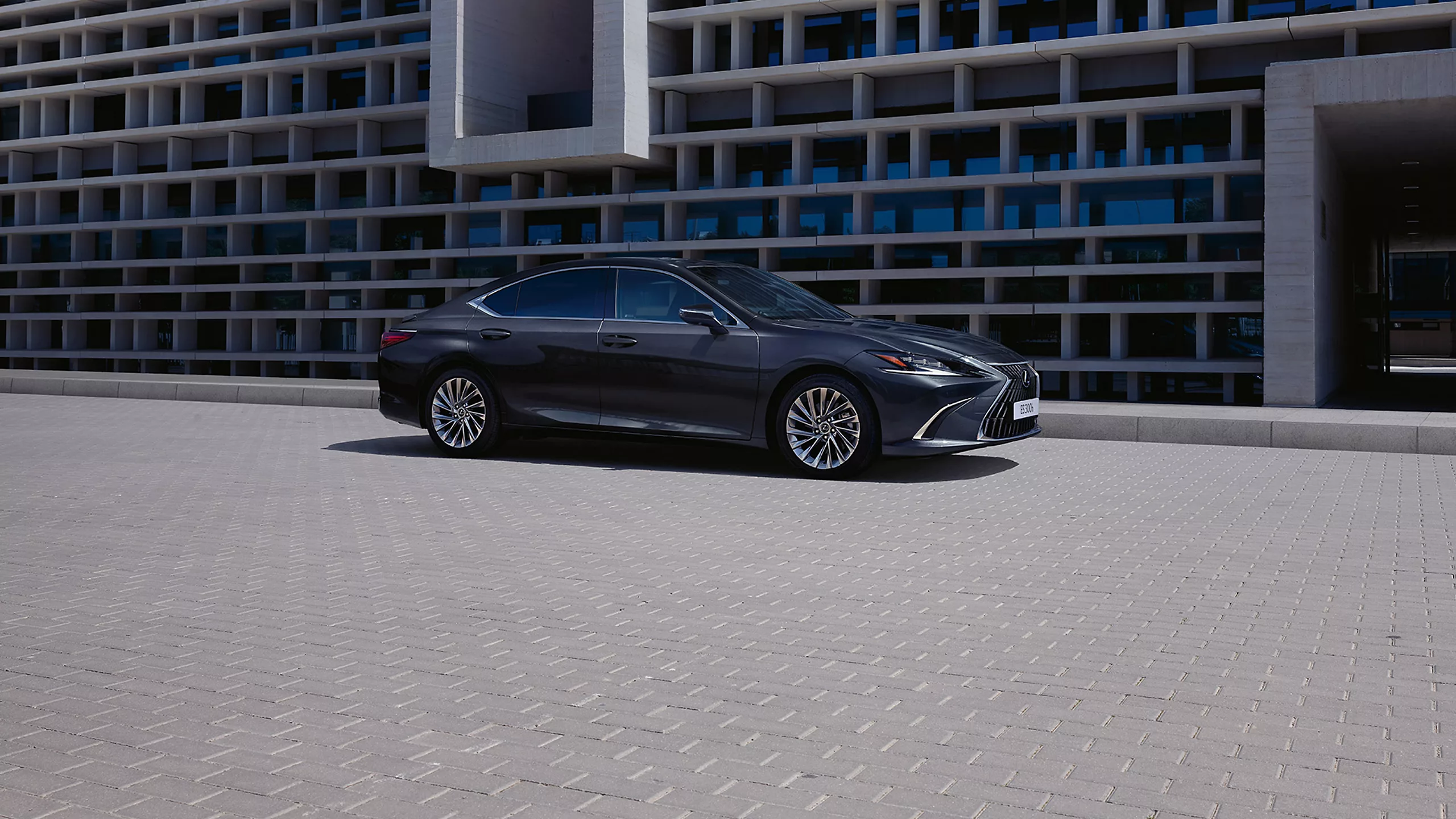
These factors combine to create a transmission that frequently achieves 300,000+ miles without major service requirements a stark contrast to the premature failures common in many luxury competitors.
Lexus’s approach to electrical systems further enhances the ES’s suitability for heavy use. Rather than pushing technological boundaries with unproven electronics, Lexus introduces new features only after thorough testing and validation.
This conservative approach results in remarkably low failure rates for power accessories, climate control systems, and infotainment components areas where many luxury vehicles develop expensive problems as they age.
Additionally, careful wire routing and high-quality connectors minimize the risk of electrical gremlins resulting from vibration or environmental exposure.
The ES’s suspension system balances comfort with longevity through thoughtful engineering. While many luxury vehicles sacrifice durability for a plush ride, the ES utilizes precisely calibrated spring rates and sophisticated damper technology that deliver comfort without the rapid deterioration common in air suspension systems.
Suspension bushings incorporate high-quality materials that resist hardening and cracking, maintaining consistent ride characteristics despite years of exposure to varying road conditions and environmental factors.
Interior materials in the ES demonstrate similar attention to longevity. Seat padding utilizes multi-density foam that resists compression and maintains support despite thousands of entry-exit cycles.
Leather surfaces (or NuLuxe in some models) undergo additional treatment to resist cracking and wear patterns, while touch points feature materials specifically selected for their resistance to oils and contaminants that cause premature deterioration in many luxury vehicles.
The ES’s exceptional suitability for heavy daily use is perhaps best illustrated by its widespread adoption as an executive car and luxury livery vehicle roles where reliability is paramount and downtime is unacceptable.
5 Cars That Can’t Handle Heavy Daily Use
1. Range Rover
The Range Rover represents the pinnacle of British luxury SUV engineering, delivering an unmatched combination of opulent interior appointments and genuine off-road capability.
However, this same complexity that enables its extraordinary versatility also creates significant vulnerabilities when subjected to heavy daily use, making it a questionable choice for those requiring consistent, trouble-free transportation.
The Range Rover’s air suspension system exemplifies this fundamental dilemma. While providing adjustable ride height and exceptional comfort, this sophisticated system incorporates numerous components compressors, solenoids, height sensors, and air bladders each representing a potential failure point.
Under heavy daily use, these components face accelerated wear from constant cycling, environmental contamination, and moisture exposure.
Failure typically occurs between 60,000-100,000 miles, presenting owners with repair bills exceeding $2,000 per corner. More problematically, these failures often strand vehicles, as the system may collapse entirely rather than degrade gradually.
Similar complexity challenges extend to the Range Rover’s electrical architecture. The vehicle incorporates over 70 individual control modules communicating across multiple network protocols. This elaborate system enables advanced features but creates extraordinary diagnostic challenges when intermittent issues develop.
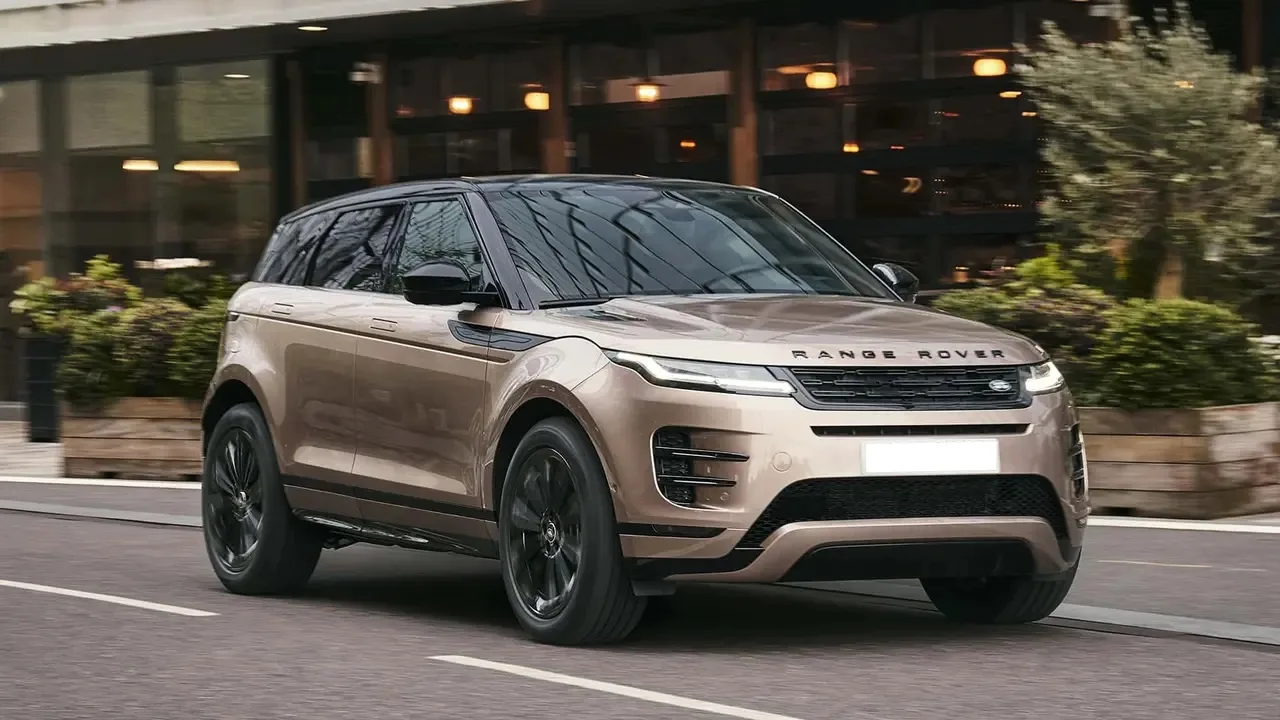
Owners frequently report mysterious electrical gremlins affecting everything from climate control to power accessories, with dealers sometimes requiring multiple visits to resolve simple issues.
The touchscreen infotainment system central to controlling many vehicle functions has proven particularly problematic, with screen freezes and system crashes common under heavy use.
The Range Rover’s drivetrain components face similar durability challenges. Transfer cases often develop fluid leaks or electronic selector issues around 80,000 miles, while differentials require more frequent service than competitors.
The sophisticated transmission, a ZF 8-speed in recent models, performs brilliantly when new but develops shifting hesitation and harsh engagement as it ages, particularly when subjected to frequent stop-and-go driving.
These issues typically emerge beyond the warranty period, creating substantial unexpected expenses for second owners.
Range Rover’s cooling system represents another vulnerability under heavy use. The tightly packaged engine compartment reduces airflow around critical components, while the complex arrangement of intercoolers, oil coolers, and radiators creates numerous potential leak points.
Coolant and oil leaks become increasingly common after 50,000 miles, with repair costs amplified by the extensive disassembly required to access affected components.
Perhaps most tellingly, Range Rover’s reliability issues are reflected in extraordinary depreciation rates among the highest in the automotive industry.
While the vehicle commands premium prices when new, three-year-old examples typically sell for less than 50% of their original MSRP, reflecting the market’s wariness about potential repair costs.
The Range Rover continues to excel as a status symbol and occasional-use luxury vehicle for those with multiple cars in their household.
However, for individuals requiring a daily driver capable of withstanding heavy use without frequent dealer visits, this British luxury icon represents a beautiful but potentially frustrating choice that demands significant financial resources to maintain properly.
2. Alfa Romeo Giulia
The Alfa Romeo Giulia burst onto the American automotive scene in 2017, fascinating enthusiasts with its stunning Italian design and exceptional driving dynamics that challenge German sports sedan supremacy.
However, beneath this fascinating exterior lies a vehicle poorly suited to heavy daily use, presenting owners with a challenging ownership proposition when subjected to rigorous, regular driving.
The Giulia’s core reliability issues center around its electrical architecture, a complex system incorporating over 30 individual control modules networked through multiple communication protocols.
Under heavy daily use, this intricate electrical ecosystem frequently develops intermittent failures that prove extraordinarily difficult to diagnose.
Owners commonly report dashboard warning lights illuminating randomly, the infotainment system freezing, and occasional complete electrical shutdowns requiring roadside assistance.
These electrical gremlins typically begin appearing around 30,000 miles, just as many lease returns enter the used market, creating potential nightmares for second owners.
Engine cooling represents another significant vulnerability in the Giulia platform. The high-performance 2.0L turbocharged four-cylinder generates substantial heat, particularly in stop-and-go traffic conditions common in daily commuting.
The cooling system’s marginally sized radiator and complex routing of coolant lines create multiple potential failure points. Thermostat housing cracks, water pump failures, and coolant loss through deteriorating seals occur with disturbing frequency between 40,000-60,000 miles.
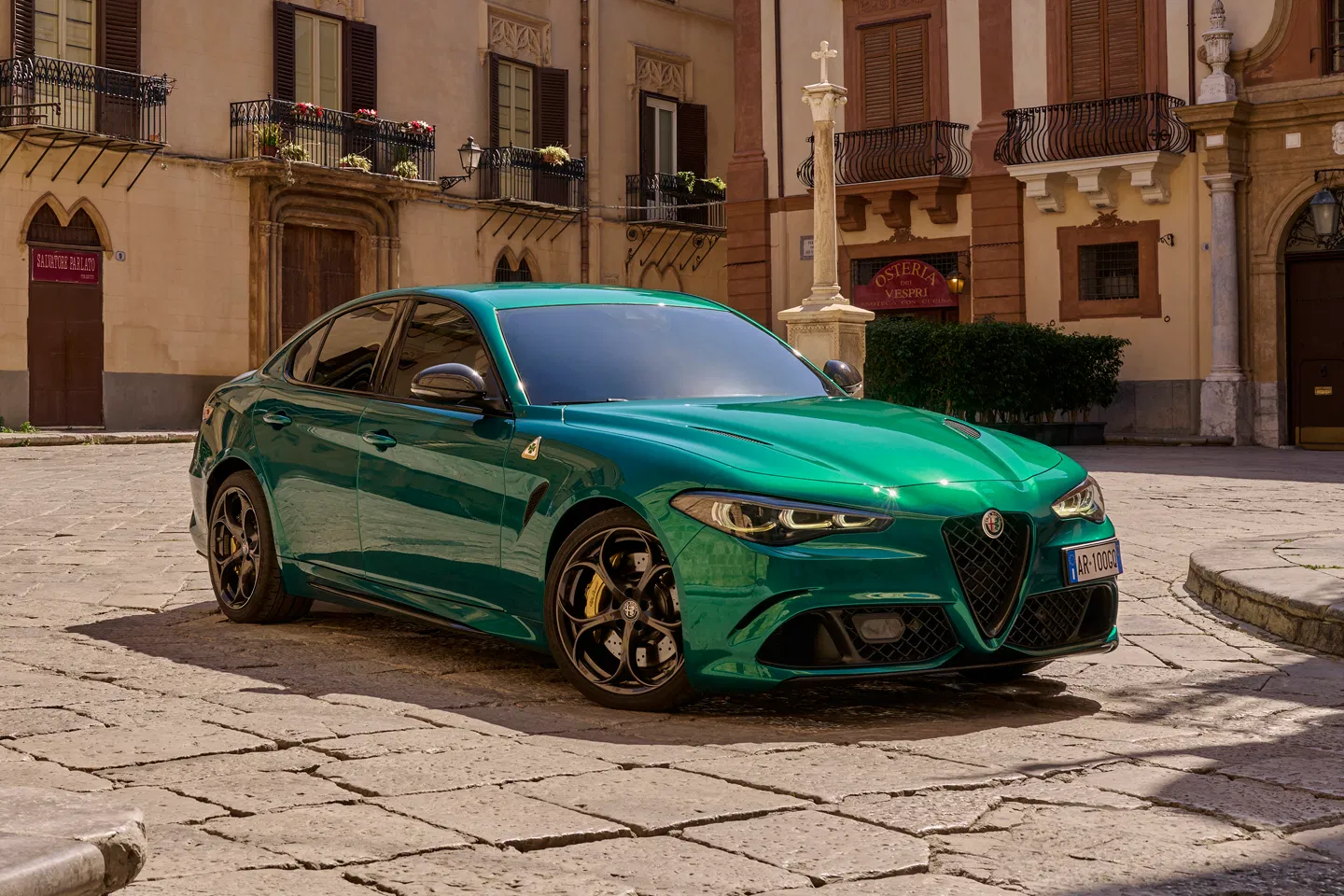
These issues are exacerbated by the engine bay’s tight packaging, which restricts airflow and makes repairs extraordinarily labor-intensive. Transmission reliability presents further concerns for heavy-use scenarios.
The ZF 8-speed automatic similar to units used in numerous luxury vehicles performs admirably when new but develops harsh shifting characteristics and occasional slippage when subjected to intensive daily use.
The transmission’s adaptive learning software sometimes struggles to maintain consistent shift quality as components wear, creating an inconsistent driving experience.
More problematically, the electronic shift-by-wire system occasionally fails to recognize gear selection inputs, creating potentially dangerous situations and requiring dealer intervention.
The Giulia’s suspension components demonstrate similar vulnerability under heavy use. Control arm bushings deteriorate prematurely when subjected to poor road conditions, creating irregular tire wear and compromising the precise handling that initially attracted buyers.
The sophisticated adaptive damping system incorporates sensors and actuators that frequently fail around 50,000 miles, reverting the suspension to a default setting that sacrifices comfort and performance.
Perhaps most telling is Alfa Romeo’s limited dealer network in North America, which compounds these reliability concerns for daily drivers.
With fewer than 130 service locations nationwide, Giulia owners often face long waits for parts and service appointments, potentially leaving them without transportation for extended periods when issues develop.
This limited infrastructure presents particular challenges for those who depend on their vehicles for daily transportation . The Giulia remains an enthralling choice for driving enthusiasts who prioritize emotional engagement and can accommodate occasional inconvenience.
However, for those requiring consistent, reliable daily transportation without frequent dealer visits, this passionate Italian sedan represents a commitment that may demand more patience and resources than many owners anticipate.
3. Jaguar XJ
The Jaguar XJ epitomizes British luxury motoring, delivering a distinctive blend of aristocratic comfort and sporting dynamics that sets it apart from its German rivals.
However, this flagship sedan’s bespoke engineering and complex systems create significant vulnerabilities when subjected to heavy daily use, making it poorly suited for those requiring consistent, trouble-free transportation.
The XJ’s electrical architecture sits at the heart of its reliability challenges. The system incorporates over 40 networked control modules managing everything from adaptive suspension to ambient lighting. This complexity creates extraordinary diagnostic challenges when intermittent issues develop into a common occurrence under heavy use.
Owners frequently report puzzling electrical failures affecting windows, door locks, and climate control systems, with problems often appearing temporarily before disappearing during dealer visits.
The infotainment system proves particularly problematic, with screen freezes and unresponsive touchscreen interfaces occurring regularly after 40,000 miles. These issues typically require software updates or complete module replacement, with diagnostic time alone often exceeding $1,000.
Air suspension reliability presents another significant concern for high-mileage XJ owners. While delivering exceptional ride quality when functioning properly, this sophisticated system incorporates numerous vulnerability points compressors, height sensors, air bladders, and control solenoids each susceptible to failure under regular use.
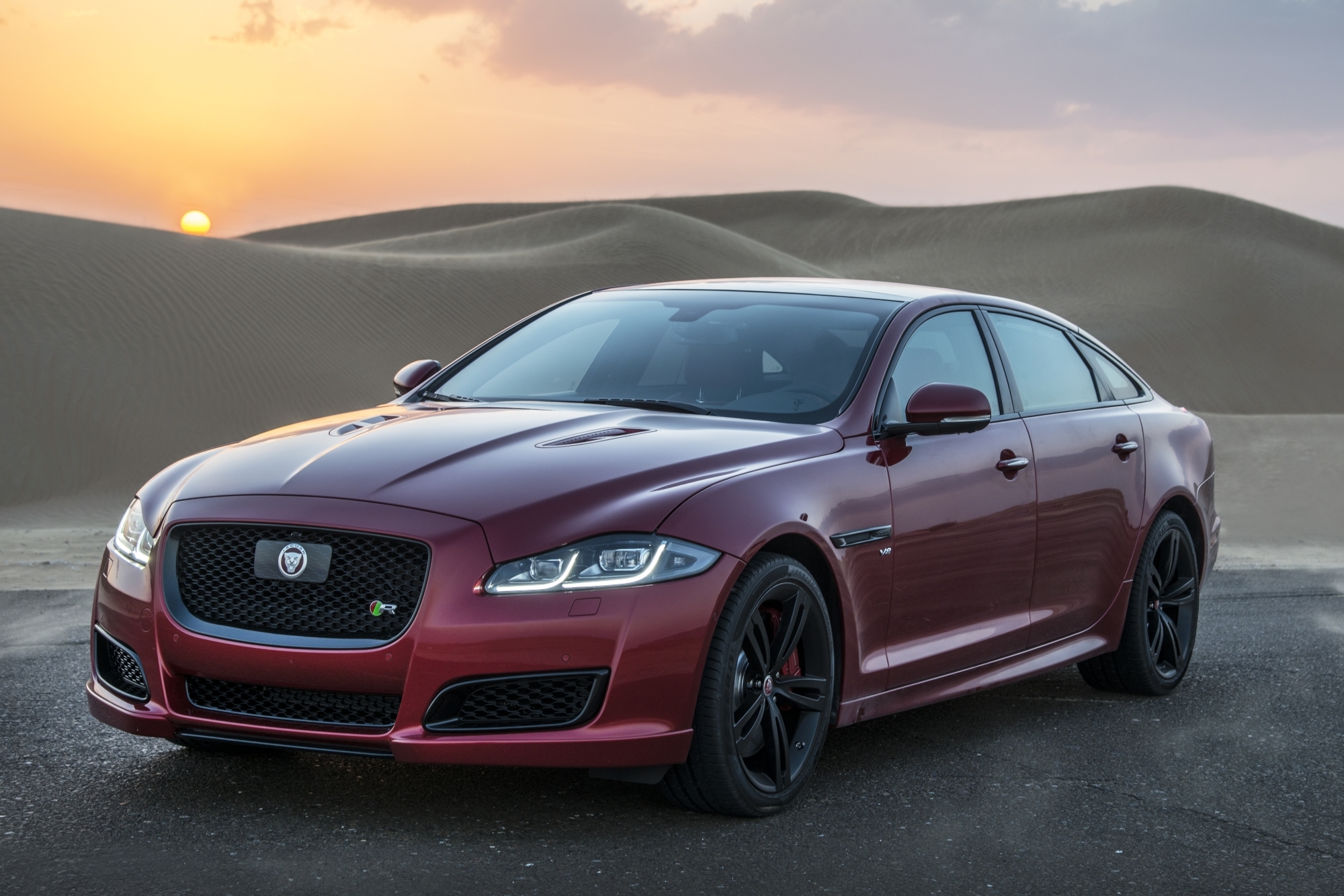
System failures typically begin around 60,000 miles, with repair costs commonly exceeding $3,500 for comprehensive suspension refurbishment.
More problematically, these failures often occur suddenly rather than progressively, potentially leaving owners stranded when the system collapses entirely.
The XJ’s supercharged V6 and V8 engines deliver impressive performance but demonstrate concerning reliability patterns under heavy use.
Oil consumption issues become increasingly common beyond 50,000 miles, with some owners reporting consumption rates exceeding one quart per 1,000 miles.
Timing chain tensioner failures a potentially catastrophic issue that can result in complete engine destruction occur with disturbing frequency between 70,000-90,000 miles.
Perhaps most concerning for daily drivers, the water pump design incorporates plastic components that degrade over time, sometimes resulting in overheating events that can cause extensive engine damage if not addressed immediately.
Transmission durability presents additional concerns, particularly when subjected to frequent cold starts and stop-and-go traffic. The ZF 8-speed automatic transmission performs admirably when new but develops harsh shifting characteristics and occasional slippage under heavy use.
The transmission’s adaptive learning software sometimes struggles to maintain consistent shift quality as components wear, creating an unpredictable driving experience that contradicts the refinement expected from a luxury flagship.
Jaguar’s limited dealer network further compounds these reliability concerns for daily drivers. With relatively few service locations compared to German competitors, XJ owners often face extended waits for appointments and parts, potentially leaving them without transportation for prolonged periods when issues develop.
This limited infrastructure presents particular challenges for those who depend on their vehicles for daily transportation needs. The XJ remains a compelling choice for luxury buyers seeking distinctive character and exclusivity who can accommodate occasional inconvenience.
However, for those requiring consistent daily transportation without frequent dealer visits, this British luxury flagship demands resources and patience that extend well beyond its initial purchase price.
4. BMW X5 M
The BMW X5 M represents a remarkable engineering achievement, delivering supercar acceleration and handling dynamics in a practical SUV package.
However, this extraordinary performance comes at a significant cost beyond the vehicle’s substantial purchase price the complex systems enabling its capabilities create numerous vulnerabilities that make it poorly suited to heavy daily use.
The X5 M’s powerplant sits at the center of its reliability concerns. The twin-turbocharged V8 engine produces extraordinary output over 600 horsepower in recent iterations by operating with internal pressures and temperatures far exceeding those in conventional engines.
This stressed design creates accelerated wear patterns, particularly when subjected to frequent cold starts and short trips characteristic of daily driving. Turbocharger failures become increasingly common beyond 60,000 miles, with replacement costs typically exceeding $5,000 per side.
The high-pressure fuel injection system similarly demonstrates vulnerability, with injector failures occurring regularly around 70,000 miles and requiring extensive labor for replacement due to the engine’s complex packaging.
The sophisticated cooling system necessary to manage this power output presents additional reliability concerns. Multiple radiators, intercoolers, and oil coolers create numerous potential leak points, with plastic components degrading prematurely under thermal cycling.
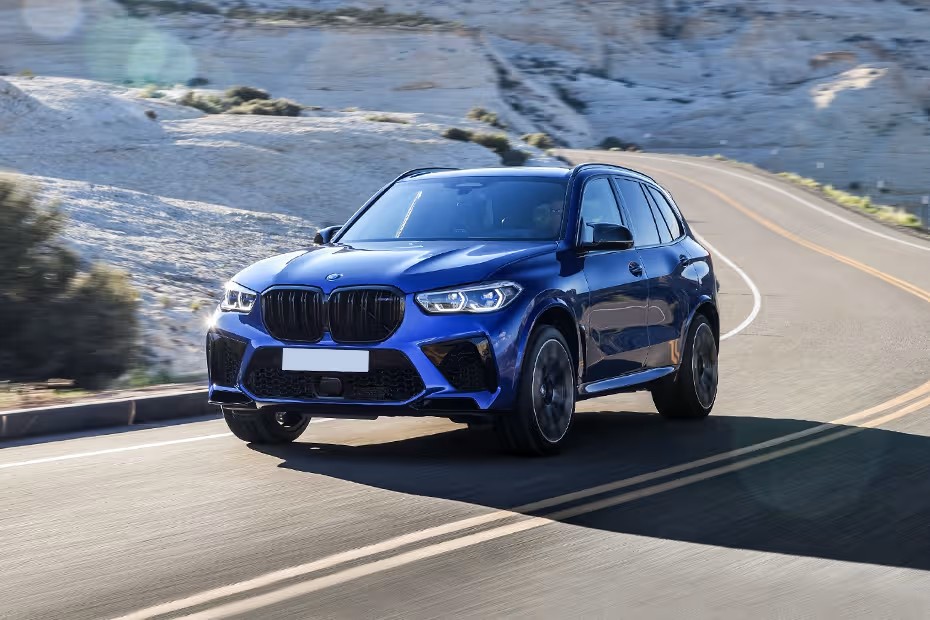
Water pump failures a notorious BMW weakness occur with particular frequency in X5 M models, typically between 50,000-70,000 miles.
These cooling system vulnerabilities create the potential for catastrophic overheating events that can result in extensive engine damage if not addressed immediately an unacceptable risk for those depending on their vehicles for daily transportation.
Transmission durability raises similar concerns under heavy use. The 8-speed automatic transmission and transfer case operate under extraordinary stress when managing the engine’s massive torque output.
Transmission fluid degradation occurs more quickly in these high-stress conditions, requiring more frequent service intervals than specified in BMW’s maintenance schedule.
Transfer case failure becomes increasingly common beyond 80,000 miles, particularly when the vehicle experiences frequent stop-and-go driving or cold weather operation.
These drivetrain vulnerabilities typically emerge beyond the warranty period, creating substantial unexpected expenses for second owners.
The X5 M’s suspension components demonstrate similar weaknesses under daily use. The adaptive damping system incorporates sensors and electronic controllers that frequently fail around 60,000 miles, creating a harsh ride and compromised handling.
Control arm bushings deteriorate prematurely when subjected to poor road conditions, resulting in front-end alignment issues and irregular tire wear.
The sophisticated air suspension system featured in some model years presents additional reliability concerns, with compressor failures and air bladder leaks occurring regularly beyond 70,000 miles.
The vehicle’s electronics architecture further compounds these reliability concerns. The complex network of control modules governing everything from engine management to convenience features creates numerous potential failure points.
Owners frequently report issues with the iDrive infotainment system, adaptive cruise control, and advanced driver assistance features problems that often require expensive diagnostic time and complete module replacement rather than simple repairs.
While the X5 M delivers extraordinary performance and prestige when functioning properly, its complex systems and stressed engineering make it poorly suited to heavy daily use.
For owners willing to accept occasional inconvenience and substantial maintenance costs, this high-performance SUV delivers an unmatched driving experience.
However, for those requiring consistent, reliable daily transportation, the X5 M represents a potentially frustrating ownership proposition that demands significant financial resources to maintain properly.
5. Maserati Ghibli
The Maserati Ghibli offers an intoxicating combination of Italian exotic appeal and relative attainability, tempting buyers seeking distinction beyond mainstream luxury sedans.
However, beneath its seductive exterior lies a vehicle fundamentally ill-suited to heavy daily use, presenting owners with a challenging ownership proposition when subjected to rigorous, regular driving.
The Ghibli’s reliability issues begin with its complicated electrical architecture, a system incorporating over 30 networked control modules governing everything from engine management to convenience features.
Under regular use, this intricate network frequently develops intermittent failures that prove extraordinarily difficult to diagnose. Owners commonly report dashboard warning lights illuminating randomly, infotainment system crashes, and sporadic failure of power accessories.
These electrical gremlins typically begin appearing around 30,000 miles and become increasingly frequent with continued use. More concerning, Maserati’s limited dealer network means diagnostic expertise is scarce, resulting in multiple service visits and significant expense to resolve seemingly simple issues.
Powertrain reliability presents additional concerns for heavy daily drivers. While the Ferrari-derived twin-turbocharged V6 engine delivers exhilarating performance, it demonstrates concerning reliability patterns under regular use.
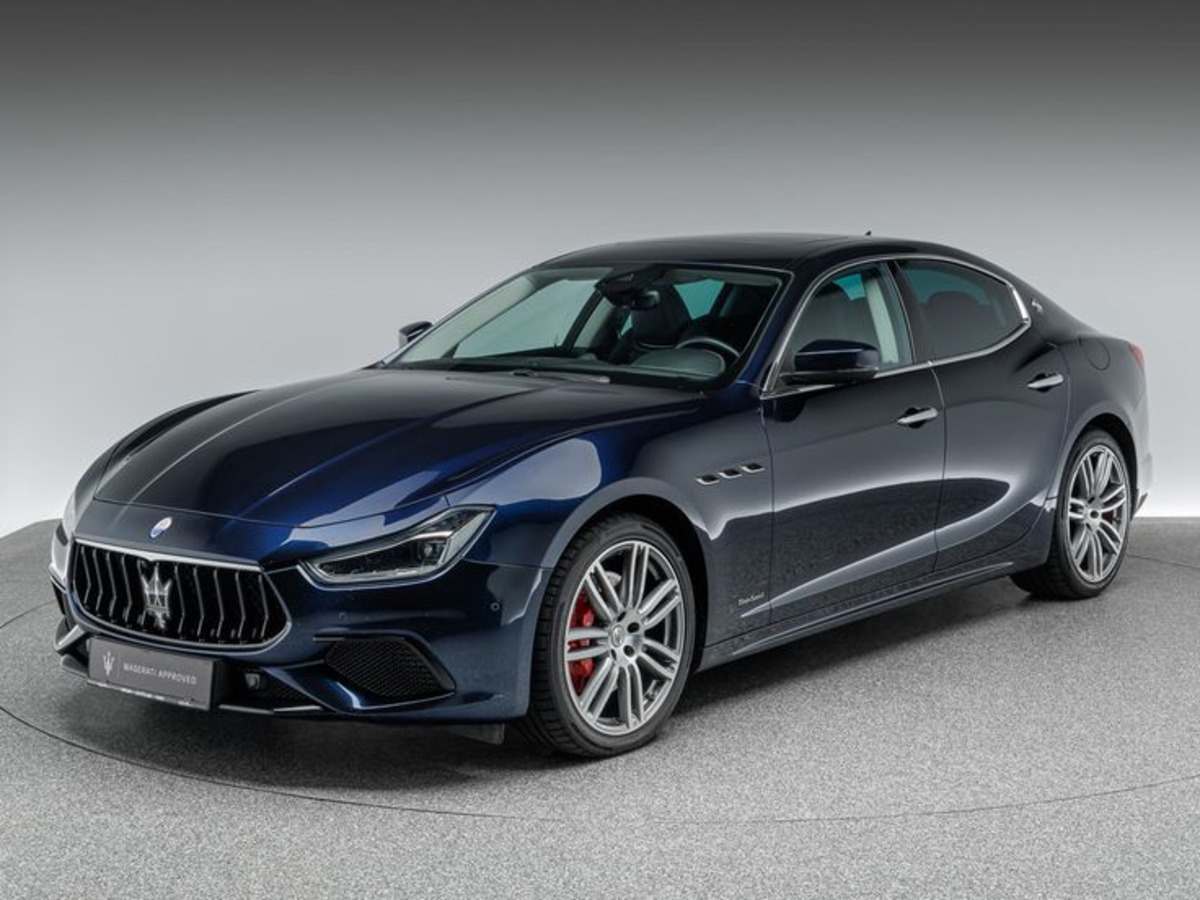
Oil consumption issues become common beyond 40,000 miles, with some owners reporting consumption rates exceeding one quart per 1,000 miles a rate requiring constant monitoring and frequent top-offs.
Timing chain tensioner failures occur with disturbing frequency between 60,000-80,000 miles, potentially resulting in catastrophic engine damage if not addressed preemptively.
Perhaps most problematically for daily drivers, the engine’s cooling system incorporates numerous plastic components that degrade under thermal cycling, creating potential for overheating events that can cause extensive damage.
The ZF 8-speed automatic transmission, similar to units used in numerous luxury vehicles, performs admirably when new but develops concerning symptoms under heavy use.
Transmission fluid degradation occurs more rapidly than in less stressed applications, requiring more frequent service than Maserati’s recommended intervals suggest.
Shift quality deteriorates noticeably around 50,000 miles, with harsh engagement and occasional hesitation becoming common complaints. The electronic shift-by-wire system occasionally fails to recognize gear selection inputs, creating potentially dangerous situations and requiring dealer intervention.
Interior quality issues further compromise the Ghibli’s suitability for heavy use. Despite the vehicle’s premium pricing, interior materials demonstrate disappointing durability compared to German competitors.
Leather surfaces develop premature wear patterns on bolsters and touch points, while control switches and buttons lose their crisp tactile feel with regular use.
The infotainment system essentially a reskinned Chrysler Uconnect interface from the Fiat-Chrysler parts bin feels dated compared to competitors and experiences frequent connectivity issues with mobile devices.
Perhaps most tellingly, the Ghibli suffers from extraordinary depreciation rates among the highest in the luxury sedan segment.
While commanding premium prices when new, three-year-old examples typically sell for less than 40% of their original MSRP, reflecting the market’s wariness about potential repair costs and reliability concerns.
The Ghibli remains an emotionally compelling choice for luxury buyers seeking an exotic Italian character who can accommodate occasional inconvenience.
However, for those requiring consistent, reliable daily transportation without frequent dealer visits, this seductive Italian sedan represents a potentially frustrating ownership proposition that demands significant resources beyond its initial purchase price.
Also Read: 5 Vehicles That Last on Rural Roads and 5 That Belong in Cities

